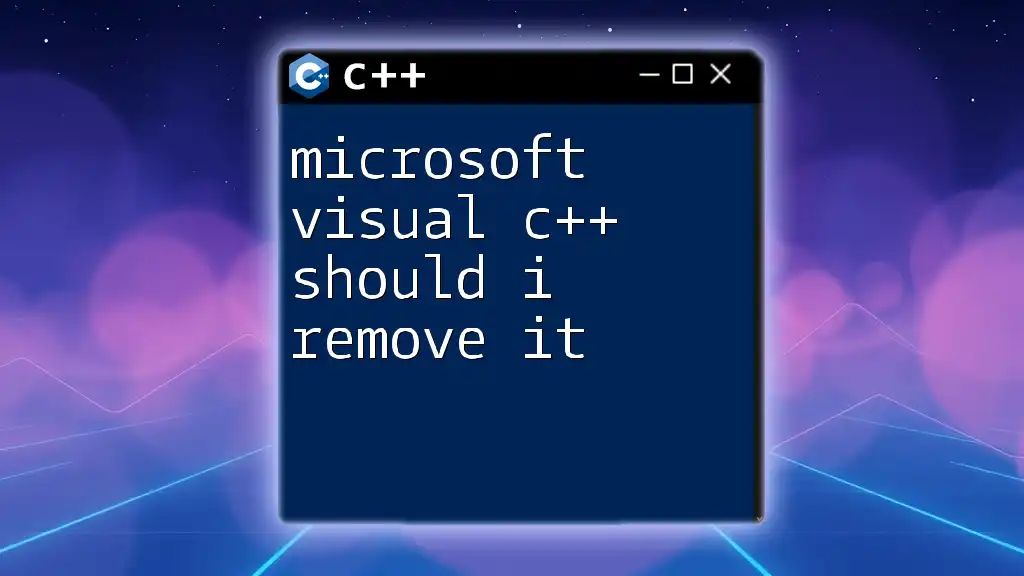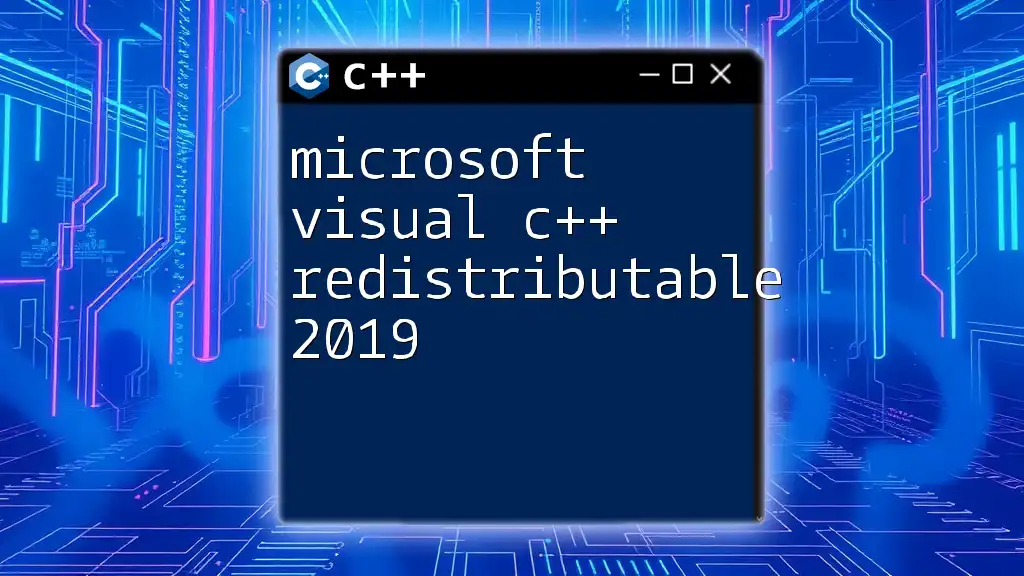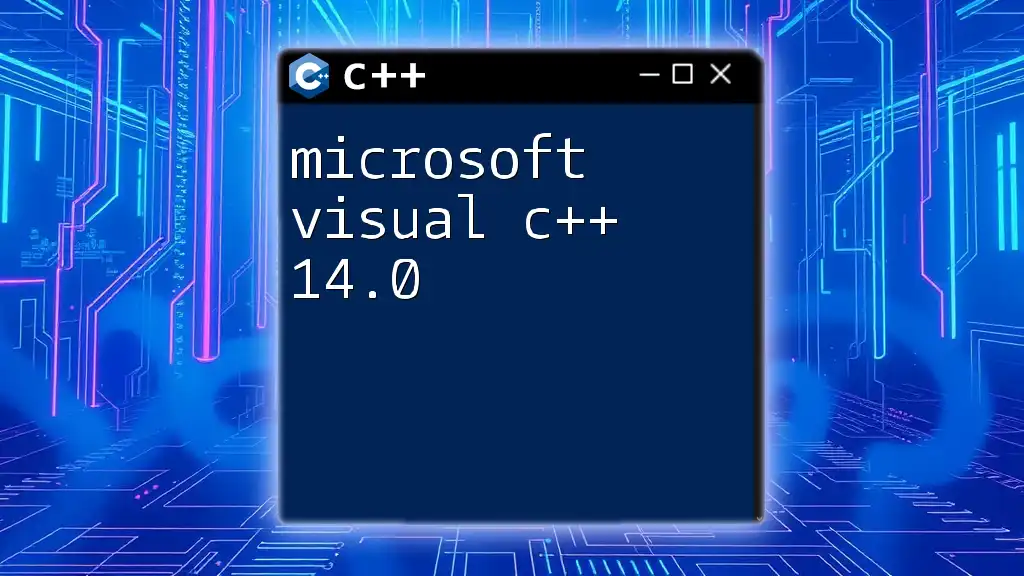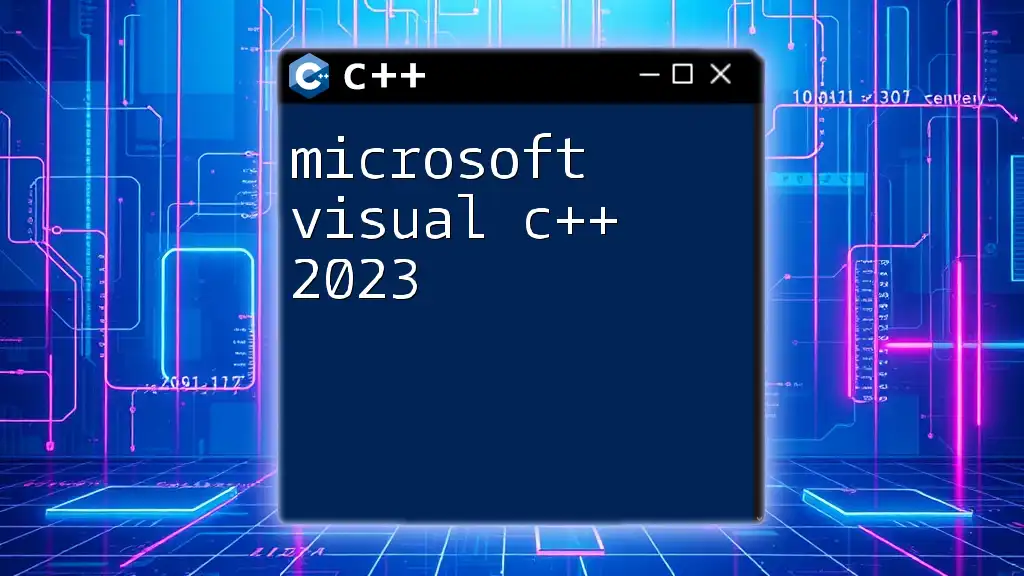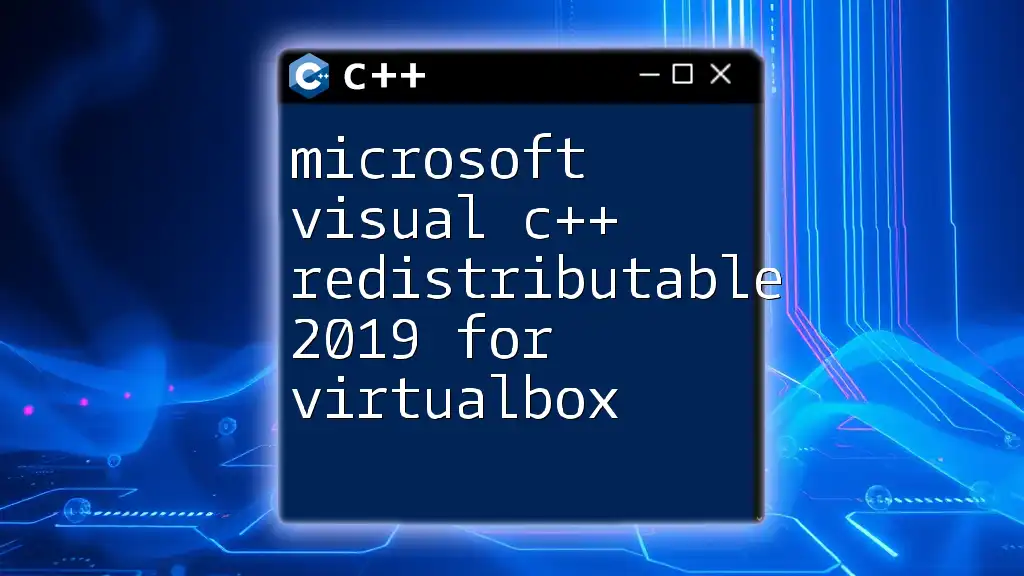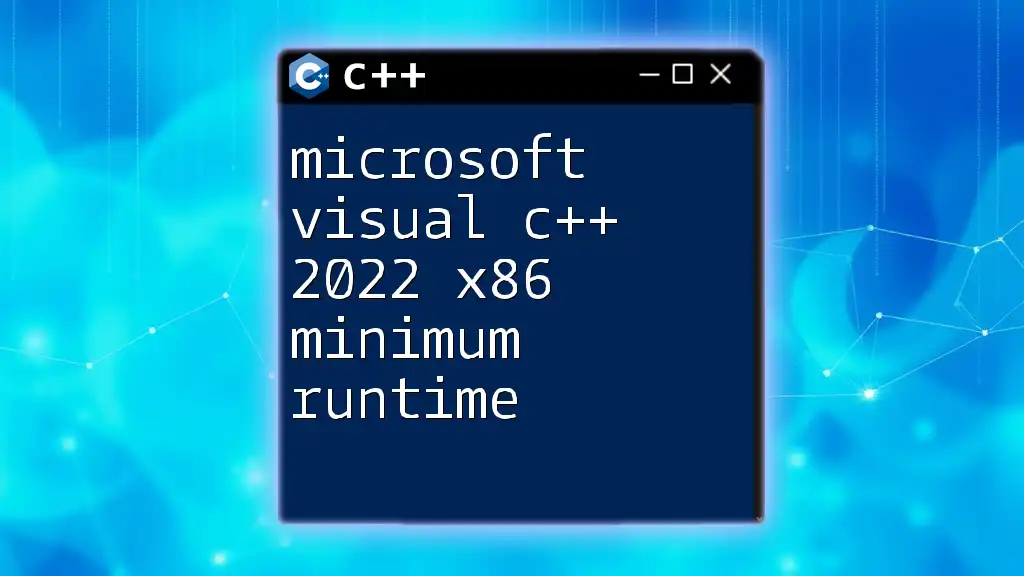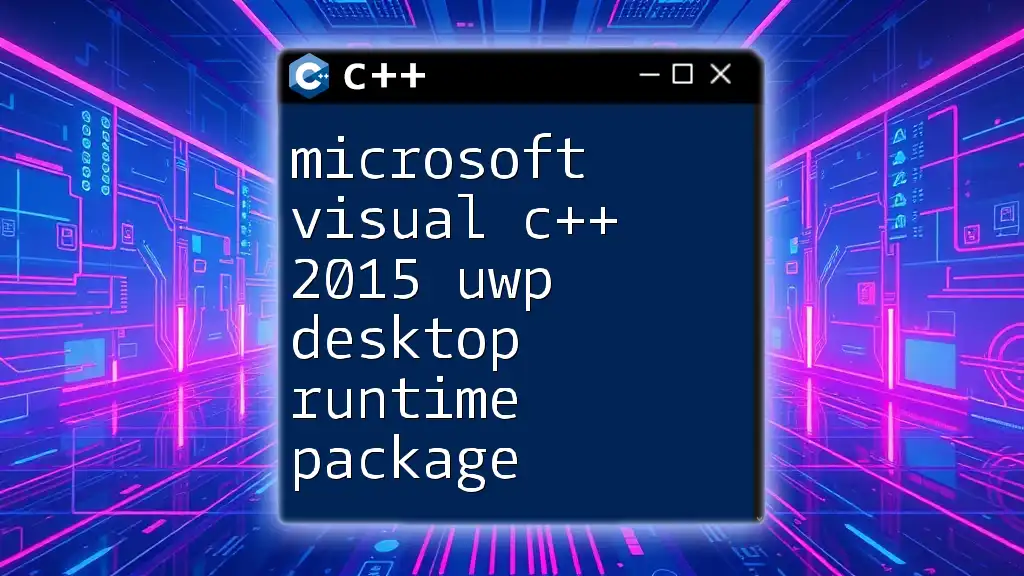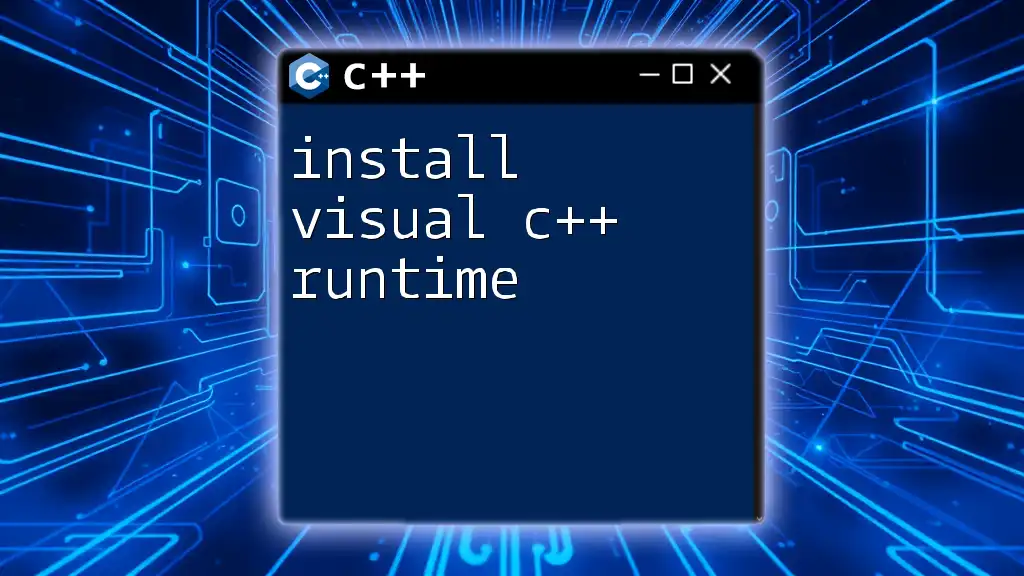If you're no longer using Microsoft Visual C++ for your development needs or prefer an alternative, it may be worth removing it to free up system resources.
Here's a simple C++ code snippet to demonstrate a basic `Hello, World!` program:
#include <iostream>
int main() {
std::cout << "Hello, World!" << std::endl;
return 0;
}
What is Microsoft Visual C++?
Microsoft Visual C++ (MSVC) is a powerful integrated development environment (IDE) used for developing applications in the C++ programming language. It offers developers an array of tools for coding, debugging, and optimizing their applications across various Windows platforms. MSVC is a crucial component of the Microsoft Visual Studio suite and is extensively utilized in software development, particularly when creating system-level applications, game engines, and high-performance software.
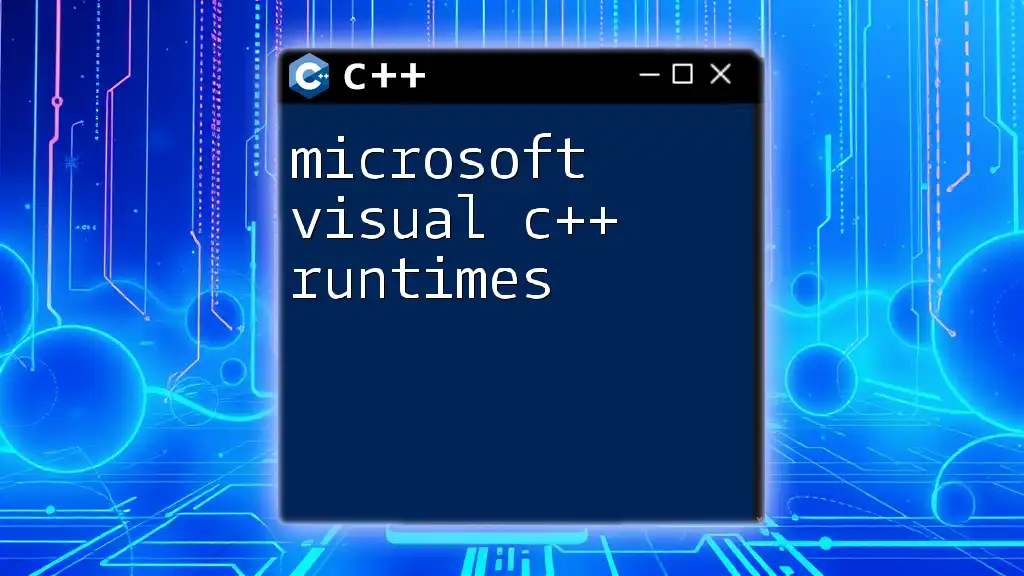
Why is This Topic Important?
When users install applications, they may find that multiple versions of Microsoft Visual C++ Redistributable are installed on their systems. Although these components are essential for running many applications, they are not always actively used, leading to questions like: “Microsoft Visual C++ should I remove it?” This article explores the implications of keeping or uninstalling Microsoft Visual C++ to help make informed decisions.
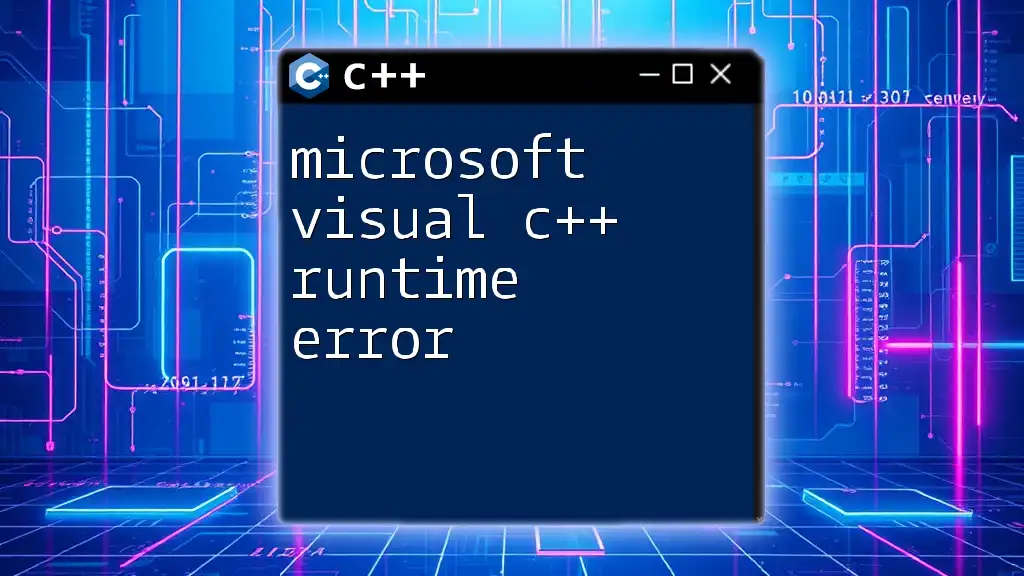
What Does Microsoft Visual C++ Do?
MSVC provides an environment where developers can write and compile C++ code, enabling them to create Windows-based applications efficiently. It includes several features that enhance productivity, such as:
- Code Editing: Offers syntax highlighting, IntelliSense, and code refactoring tools to streamline the programming process.
- Debugging Tools: Provides powerful debugging capabilities that allow developers to troubleshoot their applications easily.
- Project Templates: Comes with prebuilt project templates to jump-start new application development.
The role of Microsoft Visual C++ is significant, as it not only assists developers in writing code but also ensures applications have the proper runtime libraries for execution.
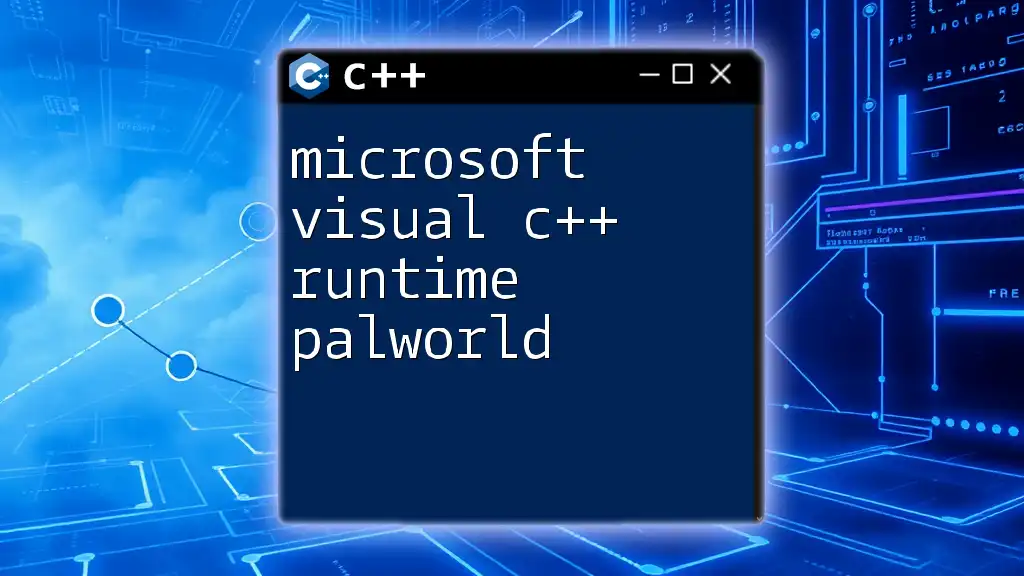
Signs You Might Want to Uninstall
While Microsoft Visual C++ serves an important purpose, there may be reasons to consider its removal. Below are some signs that you might want to uninstall it:
Application Requirements
Before deciding to uninstall, consider whether any applications on your system require Microsoft Visual C++. Many software applications, particularly those developed with Visual Studio, depend on specific versions of the Visual C++ Redistributables. Uninstalling them could lead to errors, such as:
- "Microsoft Visual C++ Runtime Error": Occurs when the required runtime files are missing.
Tip: Always check the documentation for essential software to determine if they depend on Microsoft Visual C++.
Redundant Installations
You might notice that several versions of Microsoft Visual C++ Redistributable are installed on your machine. This is common due to different applications requiring different versions.
- Can I uninstall Microsoft Visual C++?: It is possible to uninstall older or redundant versions; however, caution is advised. Uninstalling necessary versions could result in applications failing to launch.
Conflicts and Errors
Sometimes, the installation of Microsoft Visual C++ can lead to conflicts or errors on your machine. If you regularly encounter issues that trace back to Visual C++, this may provide just cause for uninstallation.
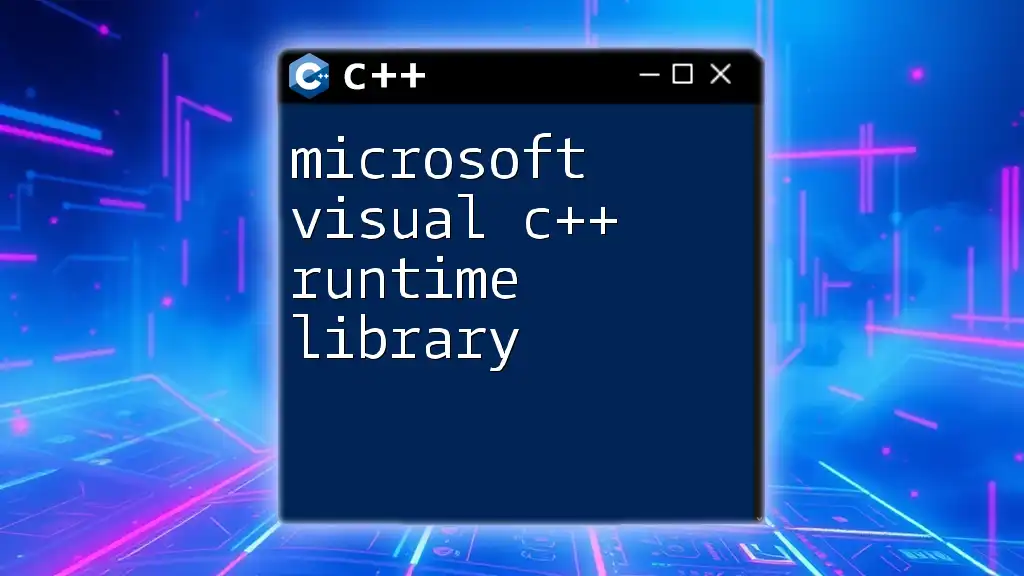
What Happens When You Uninstall?
Before proceeding with uninstallation, it is crucial to understand the potential impacts. If you decide to remove Microsoft Visual C++, consider the following:
- Applications depending on specific Visual C++ versions may break. For example, if you're developing a game using a library that relies on Visual C++ features, uninstalling can hinder your ability to run or debug the project.
- Code Snippet: Here’s a simple C++ example that utilizes features from the Visual C++ library, demonstrating a basic function that prints out text:
#include <iostream>
void printMessage() {
std::cout << "Hello, Microsoft Visual C++!" << std::endl;
}
int main() {
printMessage();
return 0;
}
Removing Visual C++ will result in failure to execute such code if it relies on specific runtime components.
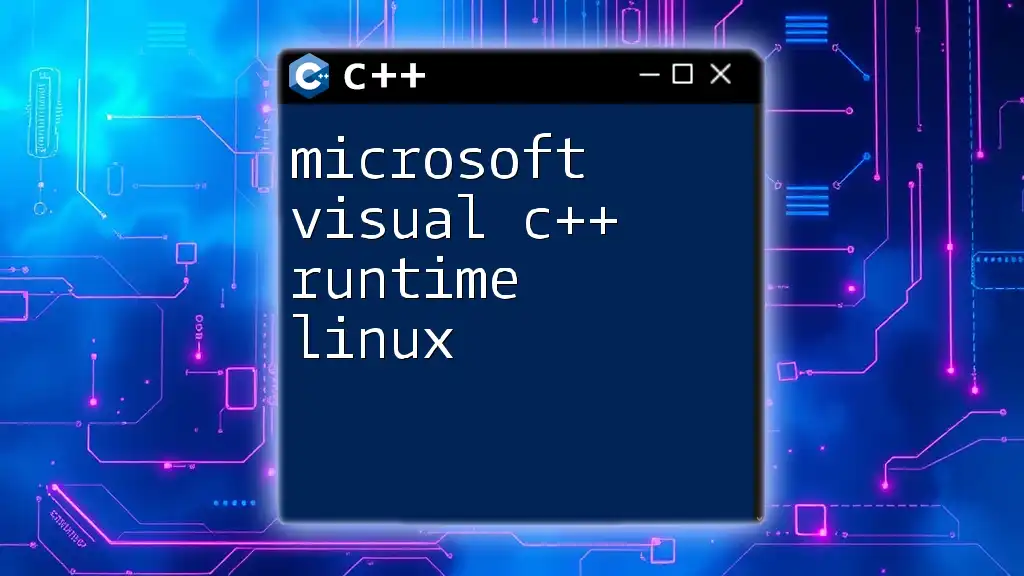
Alternatives to Microsoft Visual C++
If you determine that Microsoft Visual C++ is not necessary for your workflow, you might consider alternatives:
- GNU Compiler Collection (GCC): A free set of compilers for several programming languages, widely used in various platforms.
- Clang: A part of the LLVM project, known for its speed and useful error messages.
- Code::Blocks: An open-source IDE that supports multiple compilers and is a lightweight alternative to Visual Studio.
Each alternative has its pros and cons, and your choice should depend on what best fits your development needs.
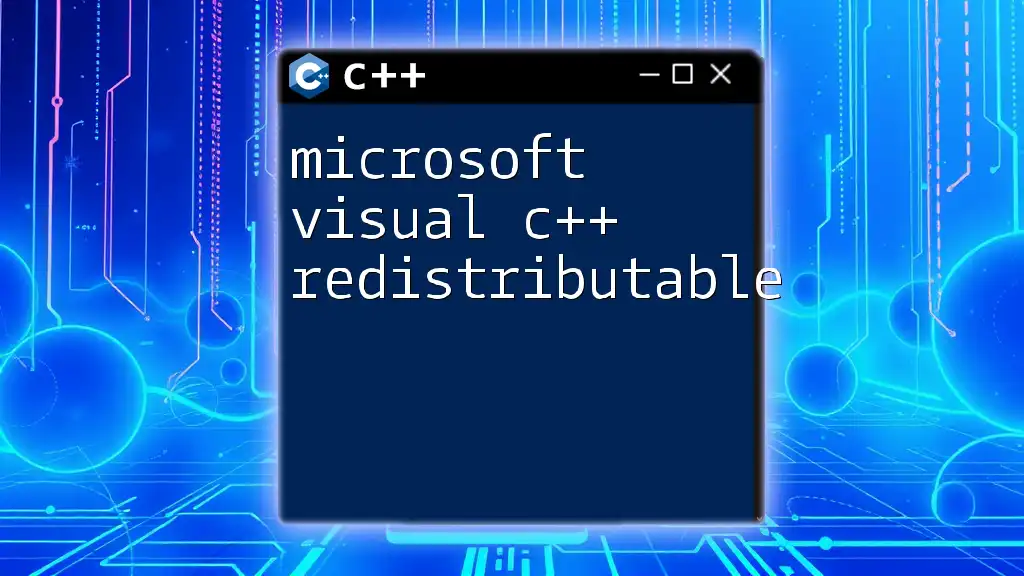
Should I Uninstall Microsoft Visual C++?
If you have determined that no applications require Visual C++, and you are encountering errors or utilitarian overload on your system, it might be time to consider uninstallation. However, before proceeding, ask yourself the following:
- Are there applications that may require specific Visual C++ versions?
- Have I backed up any projects or important files that could be affected?
- Am I prepared to reinstall if needed in the future?
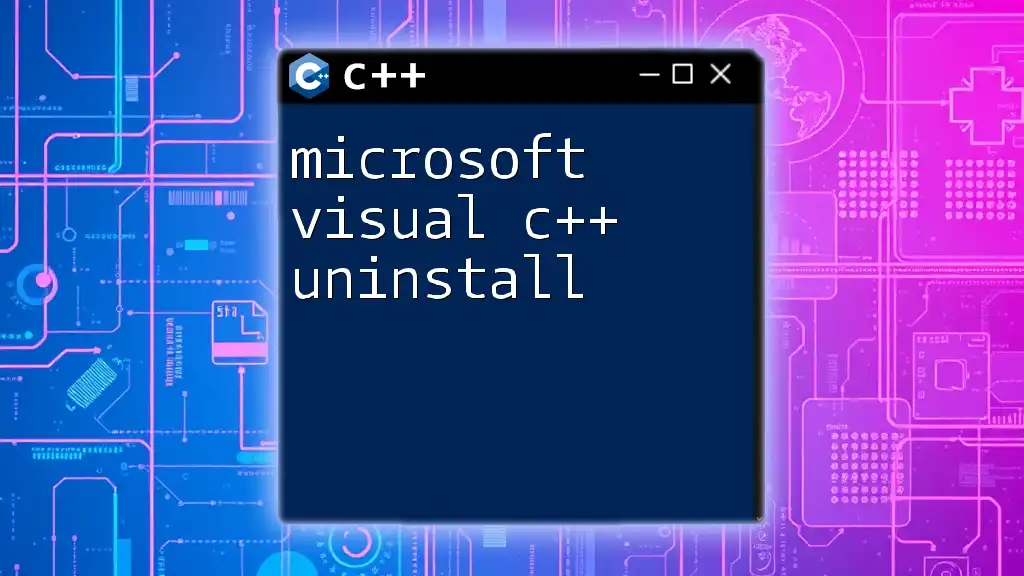
How to Uninstall Microsoft Visual C++
Should you decide to uninstall Microsoft Visual C++, follow these steps:
- Open Control Panel: Navigate to the Control Panel via the Start menu.
- Access Programs and Features: Click on "Uninstall a program" under the Programs section.
- Locate Microsoft Visual C++ Redistributables: Look for the versions installed.
- Select and Uninstall: Choose the version you wish to remove and click “Uninstall.” Follow the prompts to complete the process.
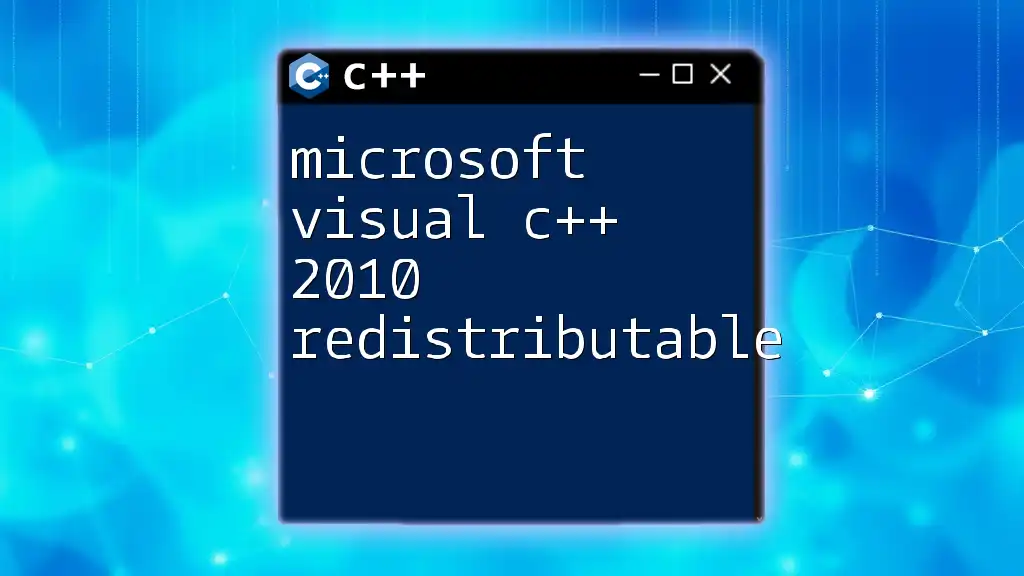
Backup and Precautions Before Uninstalling
Always prioritize backing up your projects and any relevant data before removing software. If a critical application fails to run post-uninstallation, you may need to reinstall Microsoft Visual C++ to restore functionality.

When to Reinstall Microsoft Visual C++
Reinstallation of Microsoft Visual C++ is advisable under the following circumstances:
- You have uninstalled it and encountered issues with applications that require the redistributables.
- You have updated to a new version of Visual Studio or need specific features that require Visual C++.
How to Properly Install Microsoft Visual C++
To reinstall Microsoft Visual C++, follow these steps:
- Download the Installer: Visit the official Microsoft website for the Visual C++ Redistributable download.
- Select the Version: Ensure you choose the correct version (x86 or x64) based on your system architecture.
- Follow Installation Prompts: Execute the installer and follow the prompts to complete the installation.
Important Considerations
During the installation, select components based on your development needs and ensure that you keep the necessary versions required by your applications.
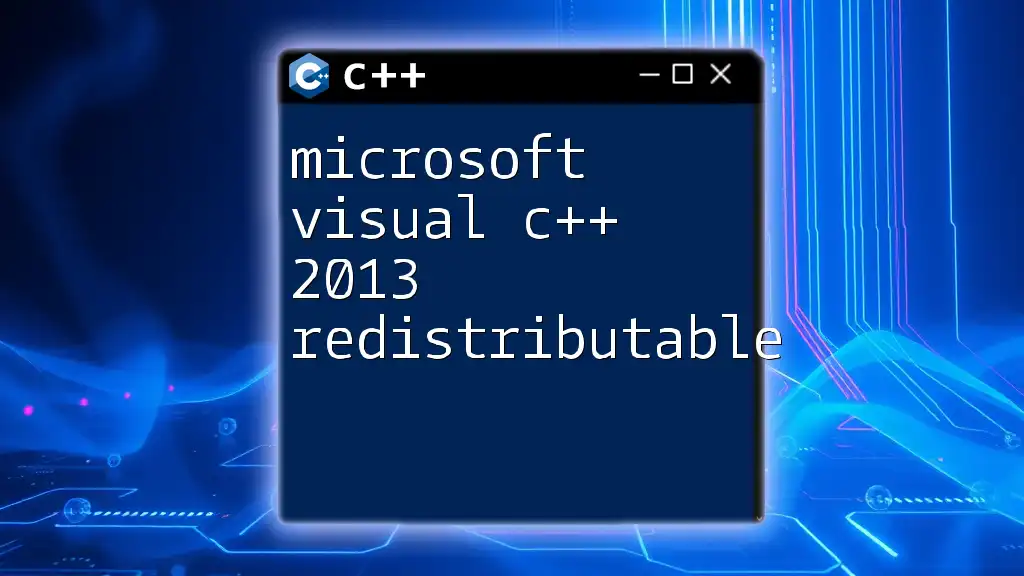
Final Thoughts on Keeping or Removing Microsoft Visual C++
The question of whether Microsoft Visual C++ should I remove it boils down to individual needs and application dependencies. Understanding its role in software development is crucial for making an informed decision. Ultimately, weigh the benefits of retaining it against the overhead of unnecessary installations. By evaluating your unique situation, you can make the right choice that enhances your development experience.
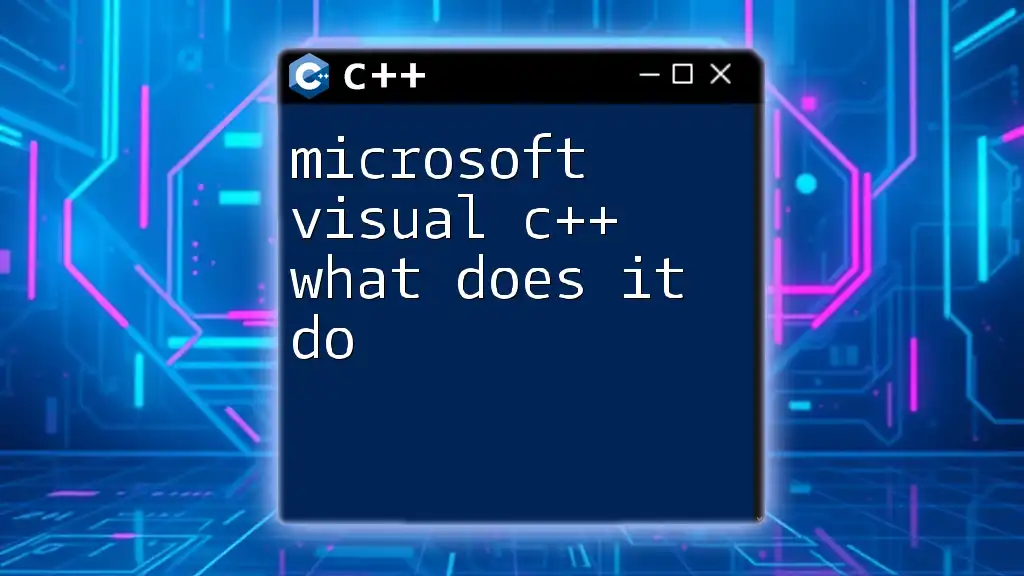
FAQs
-
Can I uninstall Microsoft Visual C++ without issues?
- It depends on whether applications installed on your machine rely on it. Assess dependencies before taking action.
-
What if my application still requires Visual C++?
- If an application depends on the C++ runtime, reinstalling the specific version may be necessary.
-
Are there any alternatives that don’t require Visual C++?
- Yes, you can explore compilers like GCC or Clang which do not rely on Visual C++ libraries for development. Each alternative has its place depending on the type of projects you are developing.

